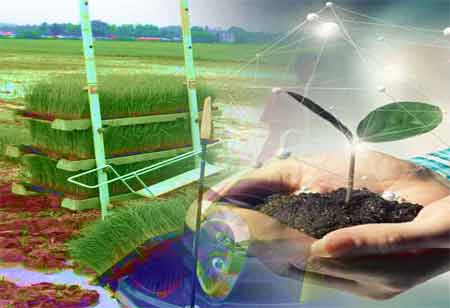THANK YOU FOR SUBSCRIBING
Be first to read the latest tech news, Industry Leader's Insights, and CIO interviews of medium and large enterprises exclusively from Food and Beverage Tech Review
Harnessing AI for Effective Food Waste Management and Reduction
Food waste is a global crisis, with nearly a third of all food produced going to waste. This equates to significant economic losses and exacerbates the issue of hunger

By
Food and Beverages Tech Review | Friday, September 22, 2023
Stay ahead of the industry with exclusive feature stories on the top companies, expert insights and the latest news delivered straight to your inbox. Subscribe today.
The food industry can significantly reduce food waste, improve operational efficiency, and mitigate environmental impact by leveraging artificial intelligence algorithms and tools.
FREMONT, CA: Food waste is a global crisis, with nearly a third of all food produced going to waste. This equates to significant economic losses and exacerbates the issue of hunger, affecting millions of people worldwide. Effective food waste management is crucial to address this problem and build a more sustainable and responsible food system. AI technology offers promising solutions to optimize processes, minimize waste, and improve decision-making throughout the food supply chain.
AI algorithms enable accurate demand forecasting by analyzing historical sales data, weather patterns, and events. This aids suppliers and retailers in optimizing inventory management, reducing overstocking and understocking, and preventing perishable items from going to waste. AI-powered vision systems examine images and videos of fruits, vegetables, and other perishable goods and detecting defects and spoilage early. Additionally, AI algorithms analyze sensor data to ensure optimal storage conditions and prevent food spoilage.
Models that use artificial intelligence estimate the remaining shelf-life of perishable items by taking into account factors like temperature, humidity, storage conditions, and product characteristics. This empowers retailers and suppliers to prioritize selling items with shorter shelf life, reducing waste caused by expired products. AI algorithms optimize transportation routes, scheduling, and logistics, streamlining operations and ensuring timely delivery of fresh produce. By considering factors like distance, traffic conditions, delivery schedules, and storage needs, AI mitigates delays and minimizes food waste within the supply chain.
AI analyzes real-time data from sensors, sales records, and other sources to optimize inventory management. It provides valuable recommendations regarding the timing and quantity of orders and inventory allocation, minimizing waste, and preventing stockouts. AI platforms connect food producers, retailers, and food banks or charities, facilitating the efficient re-distribution of surplus food. AI algorithms match supply with demand, considering factors like location, shelf-life, and transportation logistics, ensuring excess food is redirected to those in need. Personalized meal planning, recipe recommendations based on available ingredients, and storage and usage tips for food items are some of the ways in which AI-powered applications engage consumers in reducing food waste. With AI, consumers are empowered to make informed choices and minimize waste by raising awareness and providing practical solutions.
AI technology holds immense potential in addressing the global issue of food waste. Through the use of AI for demand forecasting, quality control, shelf-life prediction, supply chain optimization, inventory management, donation and re-distribution, and consumer engagement, food systems can become more sustainable and responsible. Collaborative efforts across the entire food supply chain, supported by AI, are essential in reducing food waste and ensuring a better future for our planet and its inhabitants.
Integrating AI into food waste management also aligns with broader trends in digital transformation and Industry 4.0. AI becomes a key enabler of innovation and efficiency as the food industry embraces automation, data analytics, and interconnected systems. By harnessing the power of AI, food companies can gain a competitive edge, improve operational performance, and meet the evolving demands of consumers for sustainable and responsible food practices.
I agree We use cookies on this website to enhance your user experience. By clicking any link on this page you are giving your consent for us to set cookies. More info







